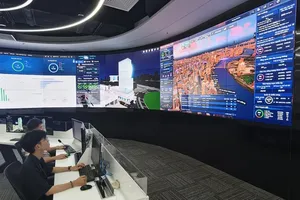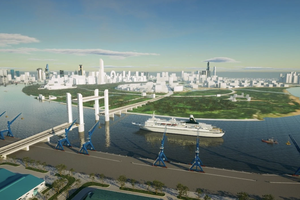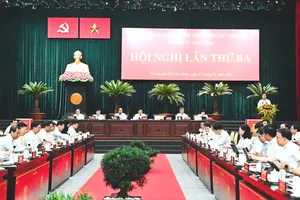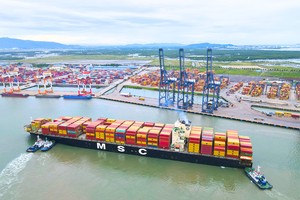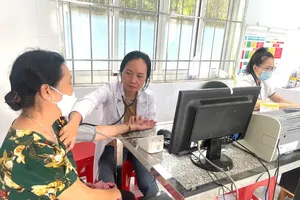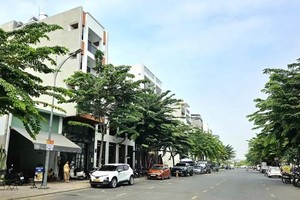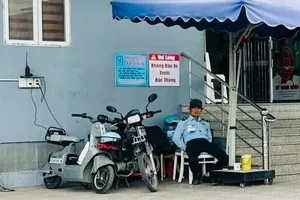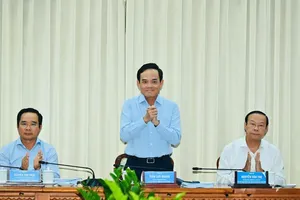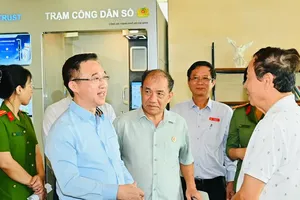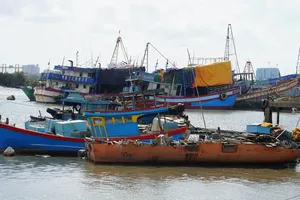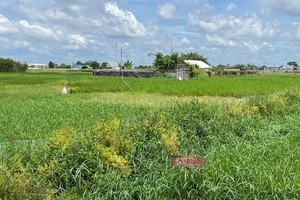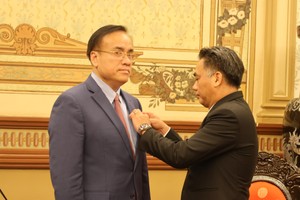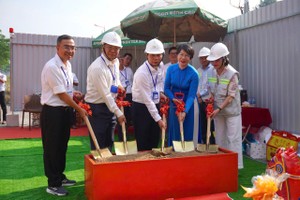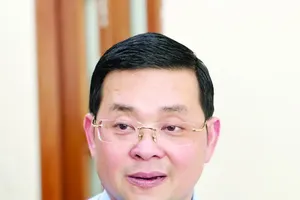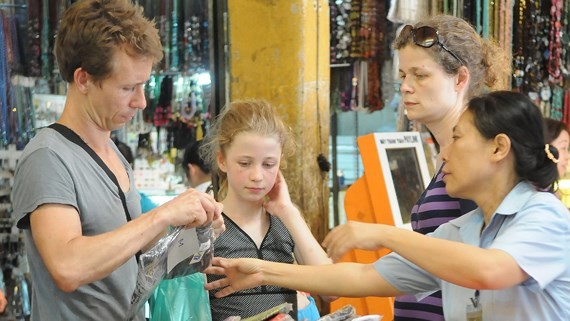
Recently, the city has launched a project to encourage city dwellers to participate in tourism industry in the city during the period of 2019-2020, aiming to develop sustainable tourism, helping the city to become a truly attractive destination to tourists.
Ms. Nguyen Van Thuy Duong, a German overseas Vietnamese, said that in the past few years, the city’s tourism has showed significant development by refreshing tours and entertainment activities for tourists. Tourism products are offered depending on each month. For instance, there is Ao Dai Festival in March, Ho Chi Minh City Tourism Festival in April and Southern Fruit Festival in June. Foreign tourists are able to get tailor-made Ao Dai directly at the event or choose ready-made products. This has made her foreign friends feel interesting. Tourists can also enjoy typical dishes of Vietnamese cuisine at events relating to local food and culture.
According to some travel agencies, the number of domestic and foreign visitors to Ho Chi Minh City increased sharply on the occasion of big holidays of the country. For instance, there were around 250,000 visitors booking tours directly or indirectly at the Tourism Festival Ho Chi Minh City 2019. Or as for the program to stimulate tourism demand in the city, tourist firms sold thousands of tours, including tours to visit Can Gio District, Saigon River cruise tour, tour to visit Cu Chi tunnel, city tour and tour from HCMC to Phan Thiet City.
Obviously, improving the quality of existing tours has made a good impression on visitors coming to the city, helping the city to be more lively and attractive in the memory of tourists, said Mr. Nguyen Quang, a tourism expert.
In addition, the city’s Tourism Department also actively connected with districts and firms to diversify and improve the quality of tourism products, such as developing Bui Vien walking street in District 1, street of traditional medicine and street of jewelry in District 5. Up to now, several travel agencies have offered these tours to visitors with destinations including pagodas, temples and clubhouses for them to enjoy local cuisine and local experiences. Therefore, revenues at these stores have increased significantly by 20-30 percent per month compared to those during the time they have not taken part in tourism industry.
Mr. David John, an Australian visitor who has come to the city for work for three weeks, said that food and drinks at Bui Vien walking street are quite good and sold at reasonable prices. Local people are friendly. Moreover, roads in the pedestrian zone are clean and airy, helping tourists to saunter and enjoy street performances easily. Having volunteers who know English, French and Chinese at tourist information centers is also a plus for the city’s tourism. Doing business with responsibility, positive attitude and reasonable prices will create good impression on tourists.
Human factor plays an important role in developing tourism. Therefore, at the meeting to improve the quality of human resource of tourism industry held last mid-April in the city, Prime Minister Nguyen Xuan Phuc emphasized that in tourism industry, efficiency is attached to values brought by human as well as service quality that they provide. People with ability and friendliness affect greatly to tourists’ satisfaction instead of luxury facilities.
Mr. Bui Ta Hoang Vu, director of the city’s Department of Tourism, said that along with maintaining and refreshing existing tourism products, the department will focus on human resource, encouraging city dwellers to participate in tourism industry. Particularly, airports, train stations or bus stations are places where foreign visitors first meet local people but local people here have not understood their importance. Therefore, it is essential to raise their awareness of their roles in giving foreign tourists a good first impression.
